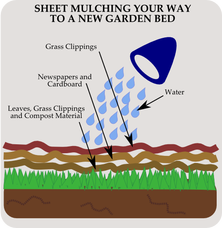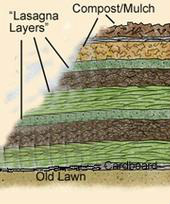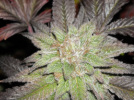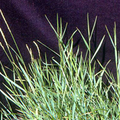Sheet Mulch - Lasagna Composting
|
Sheet composting is an ancient technique that has many practical applications today. Also referred to as lasagna composting or sheet mulching, sheet composting is a cold composting method that has been used by people around the world for generations. It is an excellent way to convert grass to vegetable beds, create new or enlarge perennial borders, improve soil and soil structure, and recycle organic material at home. As with all compost, sheet composting needs carbon, nitrogen, oxygen, and water in proper proportions to break down the organic materials into a good growing medium.
To build any good compost you need to plan ahead. Sheet composting is best started several months before you want to use the planting area. Fall is an excellent time to sheet compost as the material breaks down slowly over the winter and is ready for planting in the spring. But a bed may be started any time materials are available. The basic technique involves placing alternate layers of carbon materials and nitrogen materials directly onto the soil. (Note: Layers should be fairly equal to allow for even decomposition. One inch is recommended although deeper layers can be used.) |

There are several advantages to sheet composting:
Steps to Creating Sheet Composting:
- It is an easy and uncomplicated method of composting.
- It can be done a little at a time as materials are available.
- It can be done on a large or small scale.
- It can be used to improve soil or add to existing beds and borders.
- It is an easy way to expand a garden with a minimum amount of equipment, material and time.
Steps to Creating Sheet Composting:
Sheet composting is a slow process. There is little or no heat reaction from the microorganisms to speed the process along. A sheet compost bed may take 6-months or longer to decompose sufficiently to allow for planting. A bed is “finished” and ready for planting when the layers have decomposed to the point that the original materials are no longer recognizable and it looks and smells like fresh earth. |
GRASSES THAT NEED TO BE REMOVED:
Blackberry Grass:
Bindweed Grass:
Morning Glory Grass:
Quackgrass:
|
Proudly powered by Weebly



